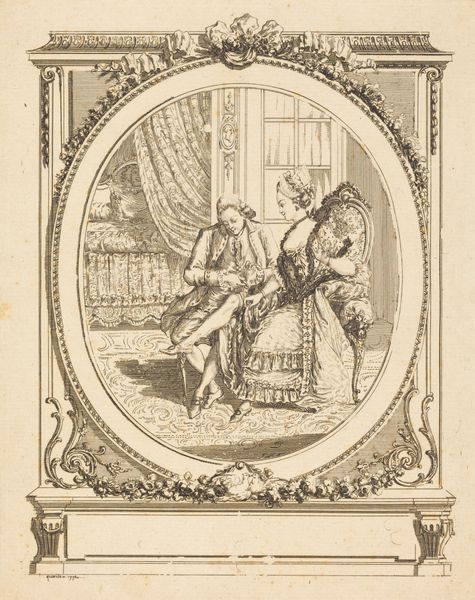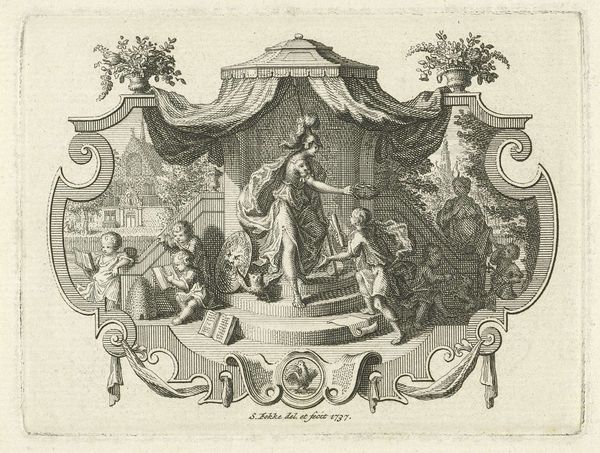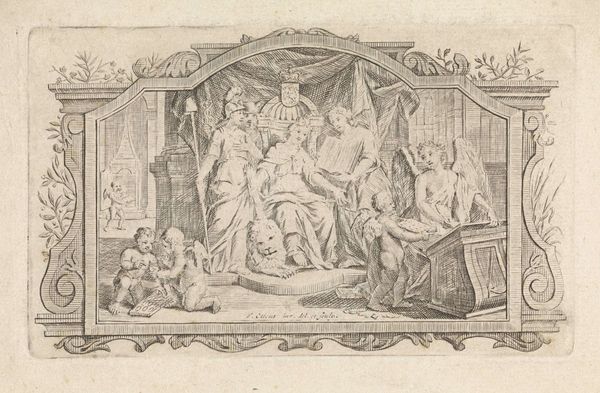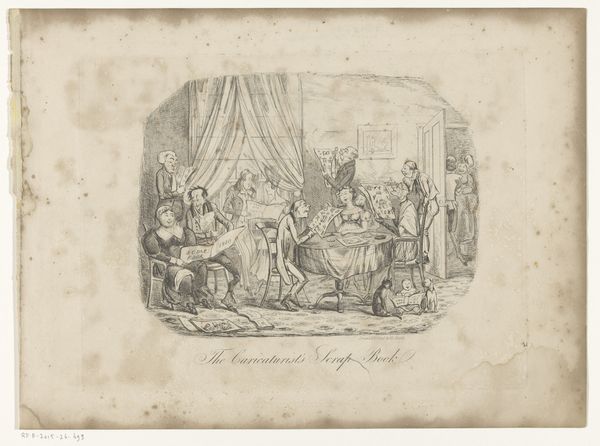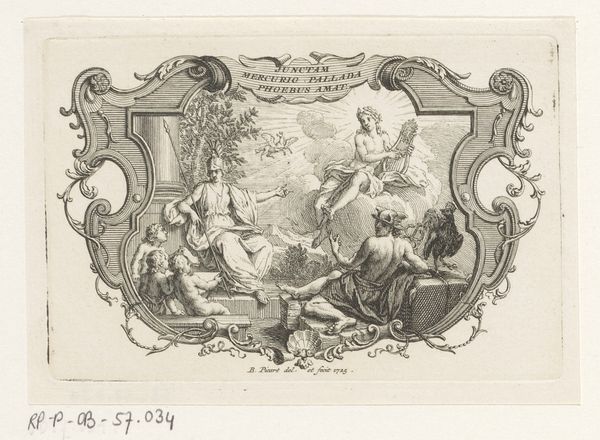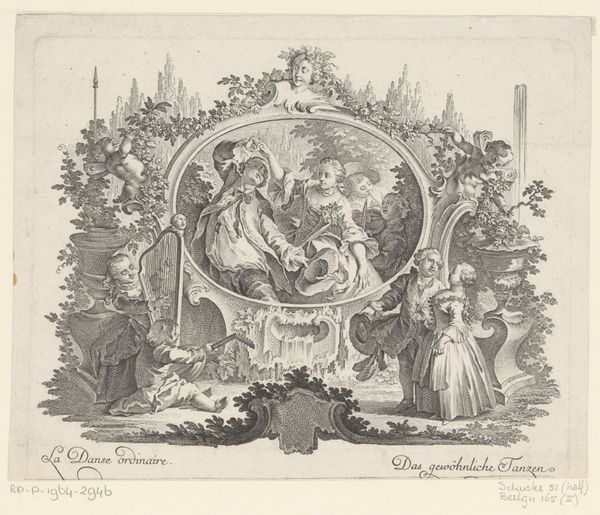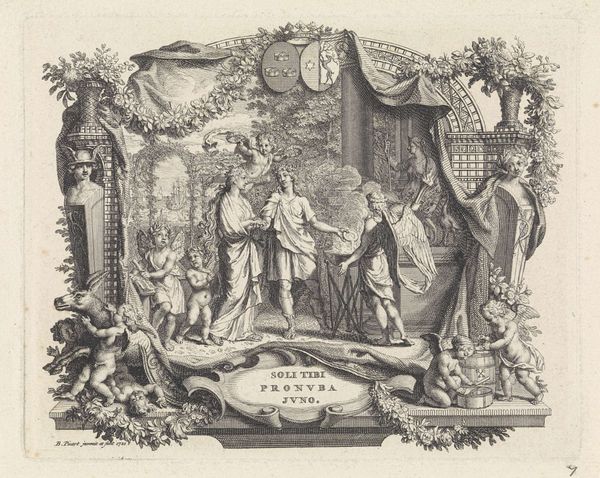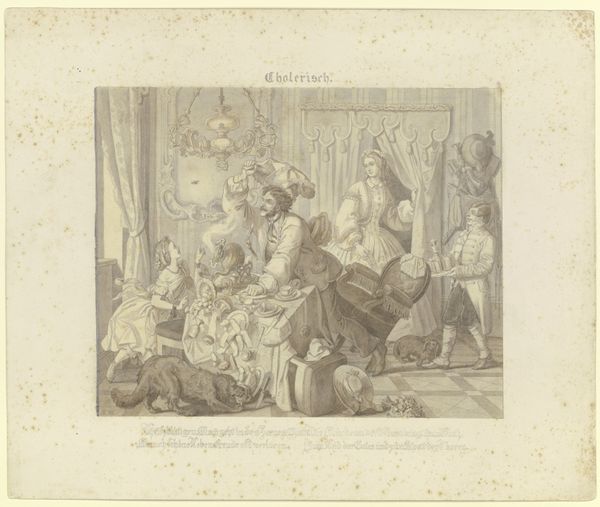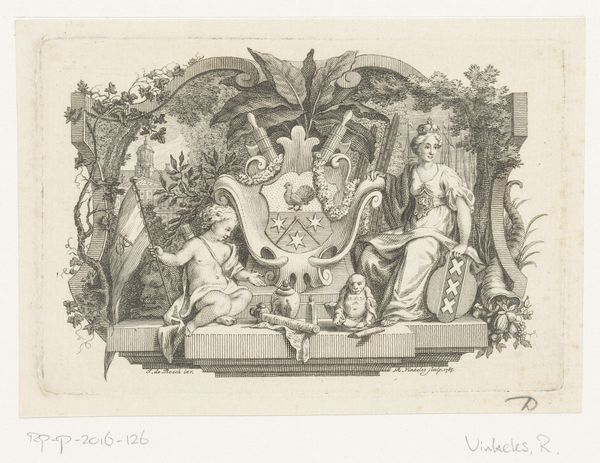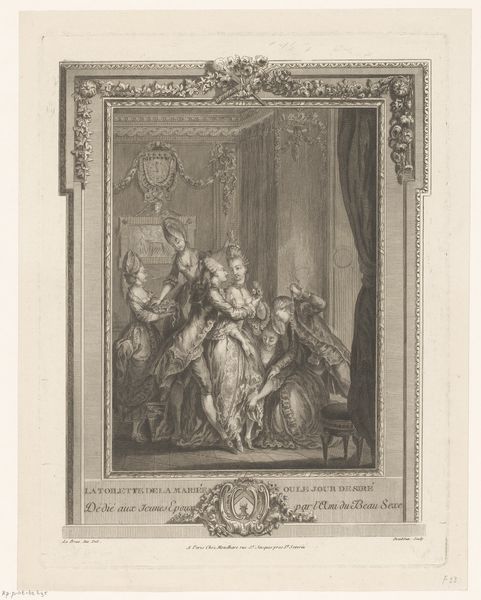
Allegorie op het huwelijk tussen Lodewijk XVI van Frankrijk en Marie Antoinette 1770
0:00
0:00
Dimensions: height 161 mm, width 197 mm
Copyright: Rijks Museum: Open Domain
Curator: Looking at this engraving by Pierre Laurent Auvray, dating back to 1770, what strikes you first about it? Editor: Hmm, an official announcement vibe, wouldn't you say? Sort of a heavy, state-sanctioned daydream encased in fruit and foliage, announcing in visual code that love is a *serious* business, indeed. Curator: Quite so. This image is, in fact, an allegory commemorating the marriage of Louis XVI to Marie Antoinette. Consider the visual grammar. The deities oversee and bless the nuptials; the oval frame itself is laden with symbolic ornamentation to invoke fecundity and legacy. It's as much political PR as personal sentiment. Editor: PR indeed. Makes one wonder what their actual pillow talk was like, if Cupid needs this much divine heavy lifting just to get them to the altar. But what strikes me is how static and staged everyone seems—especially Marie Antoinette. Is that really supposed to be joy? Curator: Well, it's not simple happiness, per se. Allegory deals in ideals and the distillation of complex sociopolitical realities into palatable symbols. Minerva, as the personification of wisdom, almost instructs a docile, demure Austria—Marie Antoinette. It subtly emphasizes her role in statecraft more than romantic agency. Editor: It’s a clever angle, I’ll grant you, using classical figures as sort of parental guidance for international relations. Still, with that much going on—gods, cherubs, state symbols, and fruit—the supposed happy couple almost gets lost. Do you think the average citizen really decoded this or just saw another expensive production of the royal house? Curator: A bit of both, I imagine. Its language was of the elite, classically trained; but spectacle carries a universal charge. Regardless, Auvray expertly synthesizes classical language and immediate political objectives into a unified, if ornate, visual statement. It offered an assurance of stability. Editor: Which, ironically, wasn’t in the cards, as we know. But that is the fascinating tension here. Looking back with history's hindsight, this "allegory" takes on a bitter, slightly tragic hue. All that forced iconography ultimately couldn't avert disaster. Makes you wonder about the visual language we use to sell power even today. Curator: A poignant thought. By decoding these seemingly straightforward celebratory images, we gain insight into enduring methods used to shape our cultural and political beliefs. Editor: And sometimes, we're given hints, that even the grandest PR campaign can’t control the capricious narrative of history.
Comments
No comments
Be the first to comment and join the conversation on the ultimate creative platform.

